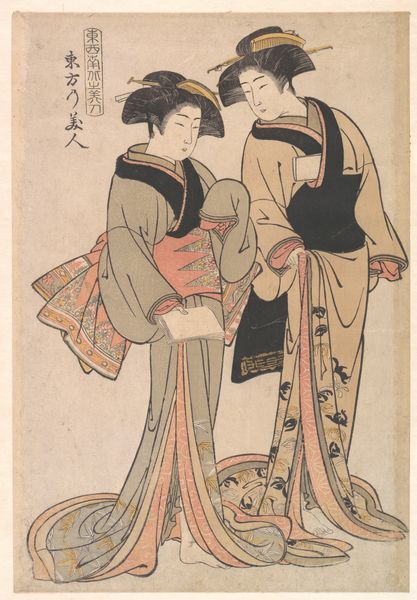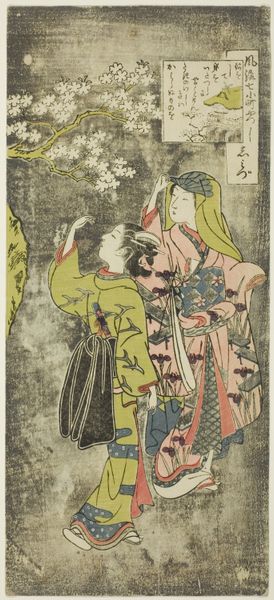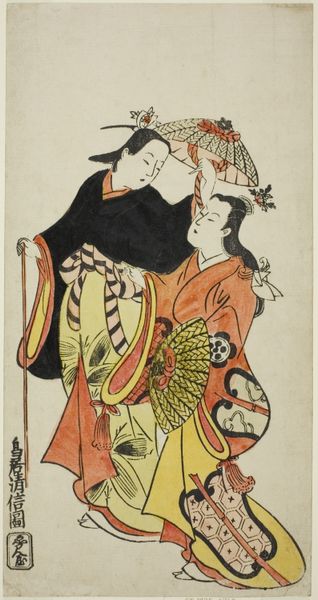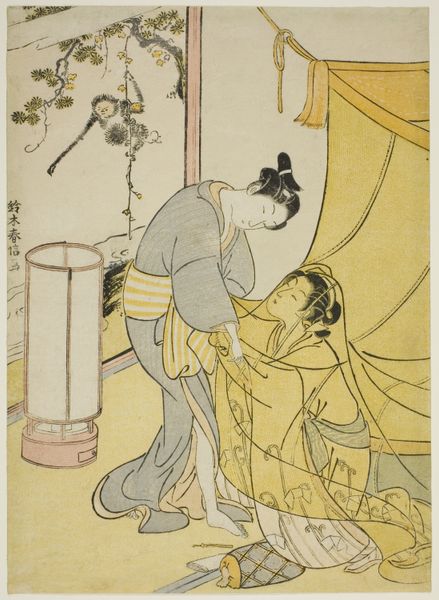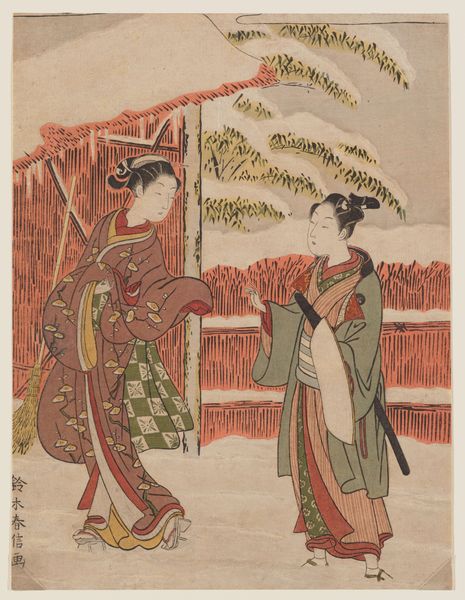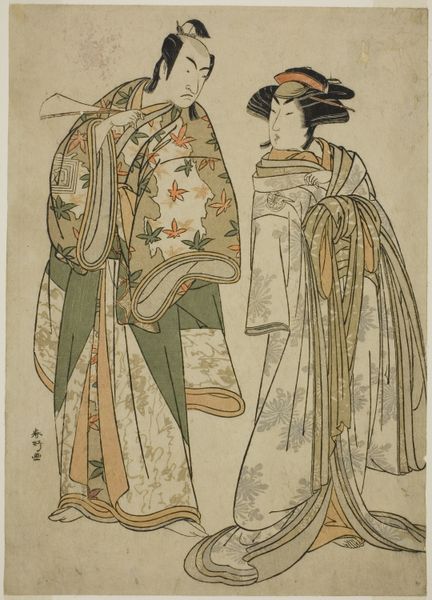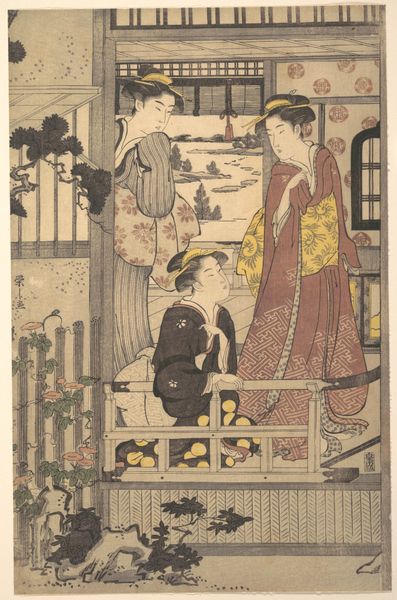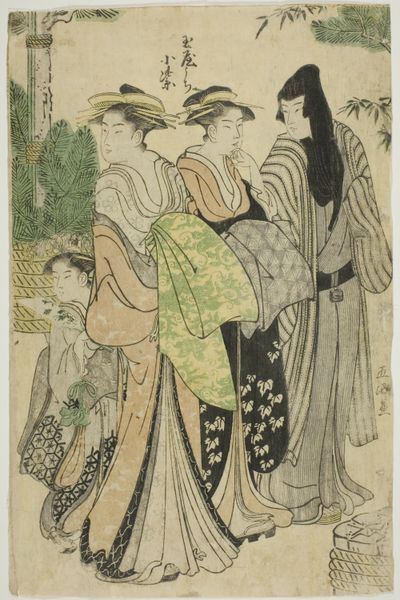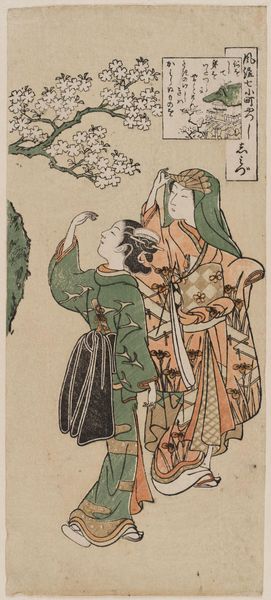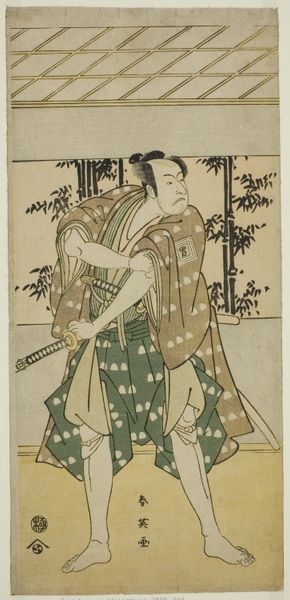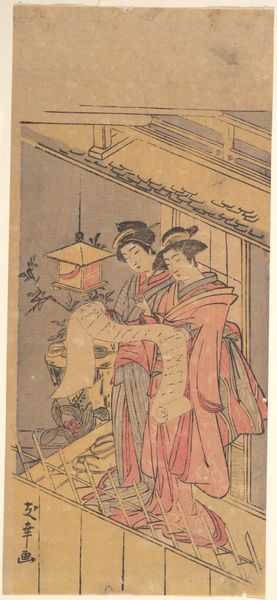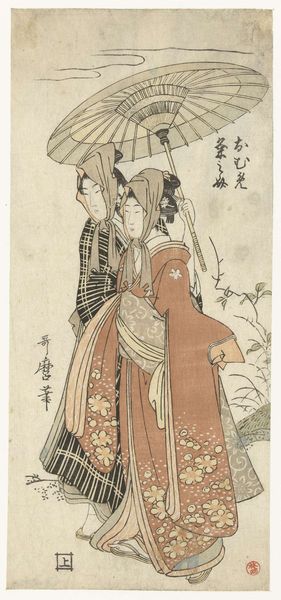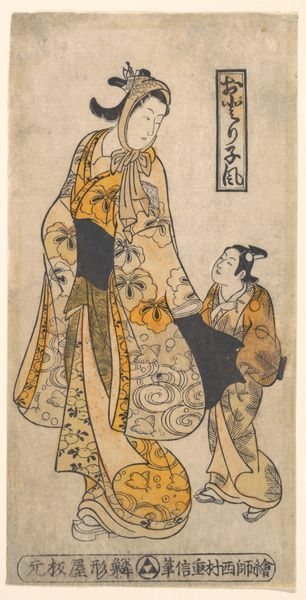
print, woodcut
#
portrait
#
tree
# print
#
asian-art
#
ukiyo-e
#
figuration
#
woodcut
#
line
#
genre-painting
Dimensions: 12 7/32 x 5 1/2 in. (31.1 x 14.0 cm)
Copyright: Public Domain
Editor: So, this is "Shimizu Temple," a woodcut print by Suzuki Harunobu, made sometime between 1755 and 1775. It depicts two figures underneath what looks like cherry blossoms. I’m really drawn to the pastel colours and delicate lines. How do you interpret this work, given its symbolism? Curator: Ah, Harunobu! He encapsulates so much of the Edo period’s sensibility. Beyond the obvious beauty, the imagery evokes layers of cultural meaning. Notice how the women are placed beneath the cherry blossoms, but are they simply admiring the fleeting beauty of nature? Editor: Perhaps, but the positioning feels intentional, maybe suggestive? Curator: Precisely! Cherry blossoms, or Sakura, have strong symbolic associations with mortality, ephemerality, and the transience of life, don't you think? Also consider the print itself as a carrier of symbols and emotions; the soft lines, the layering of colours and patterns, and even the very act of its creation as a ritual. Isn't that fascinating? Editor: Definitely! The inclusion of text gives the artwork a poetic quality and deepens the context of it. Are those popular poems of that period? Curator: Exactly. They were an important element for visual arts! Their interplay between text, figures, and setting… can’t you almost imagine the stories circulating within the artwork and beyond it, reflecting the everyday concerns and joys of its viewers? Editor: That’s a great point; looking at the image as a collection of shared experiences. I’ll remember to think about symbols in artwork beyond the immediate themes from now on. Curator: And I’ll be sure to look deeper at poetic references, expanding my horizon on social interpretation.
Comments
No comments
Be the first to comment and join the conversation on the ultimate creative platform.
